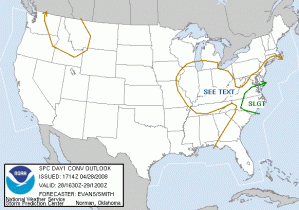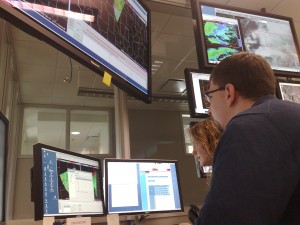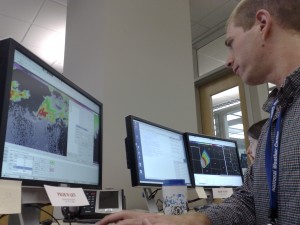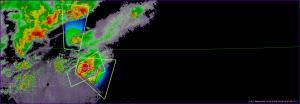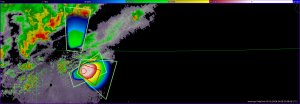There was no IOP today. The forecasters spent the day doing training and archive case playback on the various systems. This summary will contain our notes from the Gridded Warning archive case playback.
Comments and thoughts from our forecasters:
Knobology of WDSSII getting in the way of science – not comfortable with tool. Perhaps in 3-4 more days, we could be more ready. Consider a 2 week tour with a one-week overlap between tours.
Would be nice to issue hail warnings on Ref and MESH in one pane, and tornado warnings on Ref and Vel on another pane, another monitor, or another workstation.
There was some discussion about the use of low-probabilities for “pre-warnings”. Actually, that is part of the NSSL concept of gridded threat areas – to provide some downstream users who need lower-probability longer lead time information between the watch and warnings time and space scales.
Paul started by issuing threat areas in “swath mode” as is done today in the WFOs, but quickly realized this and adjusted his threat areas accordingly (current threat only).
Paul would like to issue different probs for different parts of the threat area.
Paul and Dave had a hard time with motion vector because it is not shown on the screen. With warngen, there is an arrow and past and future positions.
Most of these technology issues go away if this is fully integrated into D2D.
Definitely helps to have someone who knows the system sitting next to the forecaster.
Dave comments that perhaps the 2nd-week forecasters in the above scenario are the ones issuing the warning, while the first weekers in in training mode – perhaps not working together, so that the “veterans” can really concentrate on the science.
Paul and Dave are concerned about the precision of the prob values – what about every 10%?
Andy – how do we calibrate our probabilities? Perhaps we can integratee the verification into the live system?
Andy – Verification system should be included in the NGWT from the get-go – lesson learned from WRH experience with GFE (see white paper).
Greg Stumpf (EWP Weekly Coordinator, 28 April – 2 May)


